17th Century William and Mary Kingwood Strongbox, with Gilt Brass
SOLD
Request Information
Follow Us
17th Century William and Mary Kingwood Strongbox, with Gilt Brass
A 17th century William and Mary Kingwood strongbox, with gilt brass straps. This strongbox has to be one of the most charming and certainly the smallest example we have encountered, at just 17.5 cm high, 28 cm wide and 18 cm deep. A strongbox of similar merit form and style resides at Burghley House in ‘The 1st George State Room.
The box appears decorative, but it was also very difficult to break open or steal. It has a strong lock to the centre and two bolts concealed in the sides, so that it could be screwed down into floorboards if necessary or that of a horse-drawn carriage. Strong-boxes veneered in oysters of Princewood such as this were luxury objects.
The Cabinet-makers who would have constructed and veneered the carcase apparently sold them, often using tropical hardwood veneers, and mounted it with sets of mounts, handles and locks bought in from brass founders. The elaborate veneering and conspicuous gilded brass mounts show that the appearance of these objects was important.
Thomas Pistor, of Ludgate Hill, London worked with the renowned cabinetmaker Gerrit Jensen. Gerrit Jensen supplied a walnut-veneered ‘strongbox’ to Colonel James Grahame in 1668, Levens Hall. It is recorded that Thomas Pistor’s remaining stock was sold off post his death in 1711, included ‘three fine Prices wood strongboxes’.
Condition
Fabulous original condition with a wonderful patina.
Provenance
Literature
Dimensions
PREVIOUSLY SOLD
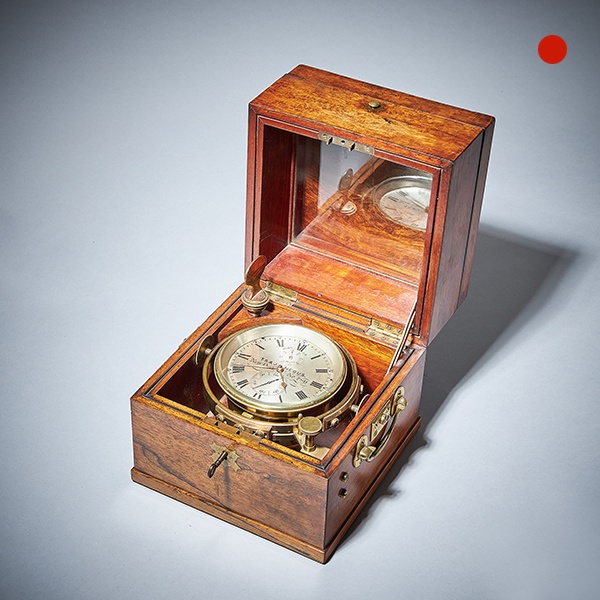
Fine American Two Day Marine Chronometer, Signed T. S & J. D Negus New York
Fine American Two Day Marine Chronometer, Signed T. S & J. D Negus New York SoldFollow UsFine American Two Day Marine Chronometer, Signed T. S & J. D Negus New York A Classic beautifully produced mid-19th century American chronometer...
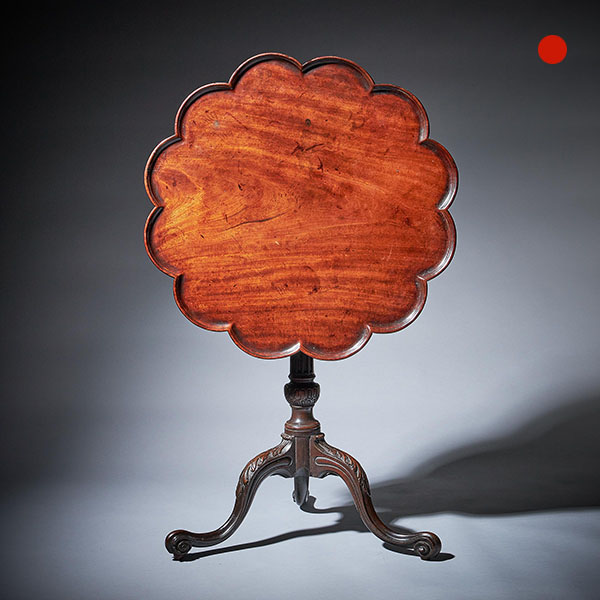
Fine 18th Century George III Chippendale Mahogany pie-crust Tripod Table
Fine 18th Century George III Chippendale Mahogany pie-crust Tripod Table SoldFollow UsFine 18th Century George III Chippendale Mahogany pie-crust Tripod Table A Fine 18th Century George III Mahogany Pie-Crust Tripod Table with birdcage in the...
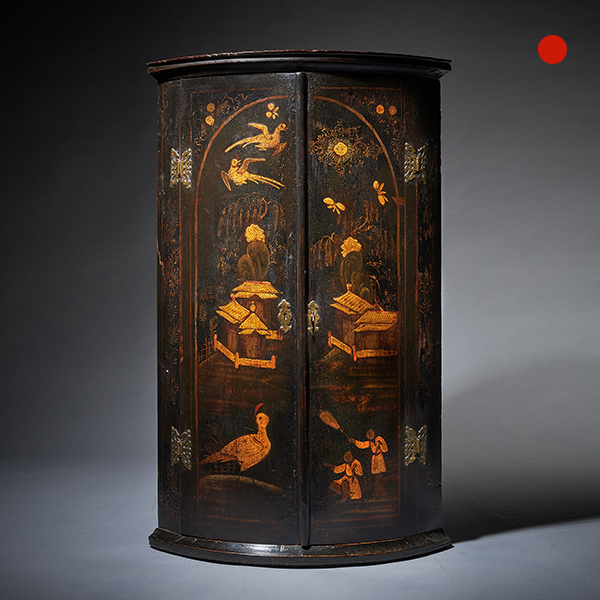
Early 18th Century Queen Anne/George I Japanned Chinoiserie Corner Cupboard
Early 18th Century Queen Anne/George I Japanned Chinoiserie Corner Cupboard SoldFollow UsEarly 18th Century Queen Anne/George I Japanned Chinoiserie Corner Cupboard A very atmospheric and original Queen Anne to George I black japanned...
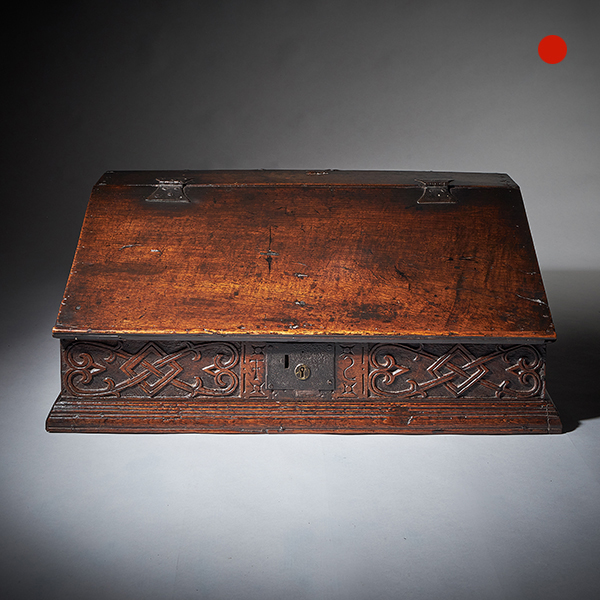
17th Century Charles II Carved Oak Writing Box or Desk Box circa 1660 England
17th Century Charles II Carved Oak Writing Box or Desk Box SoldFollow Us17th Century Charles II Carved Oak Writing Box or Desk Box A rare 17th-century Charles II carved oak writing or desk box, circa 1660. England. The box opens on the...
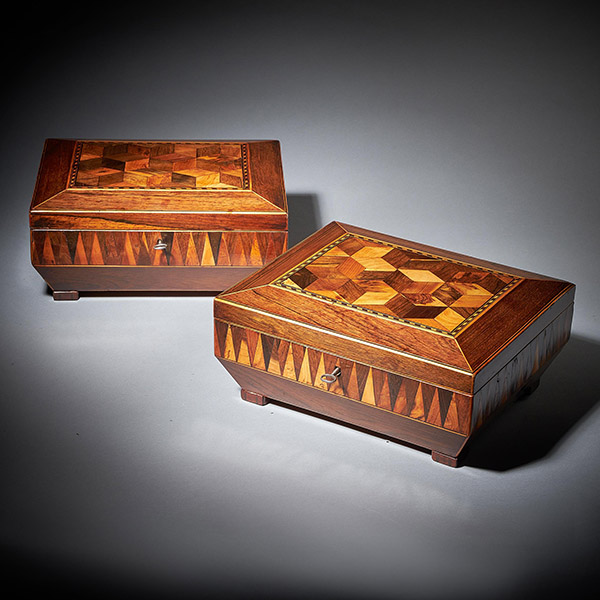
Pair of George IV Regency Specimen Wood Parquetry Boxes of Sarcophagus Shape
Pair of George IV Regency Specimen Wood Parquetry Boxes of Sarcophagus Shape SoldFollow UsPair of George IV Regency Specimen Wood Parquetry Boxes of Sarcophagus Shape An extremely rare and fine pair of George IV Regency exotic timber boxes of...
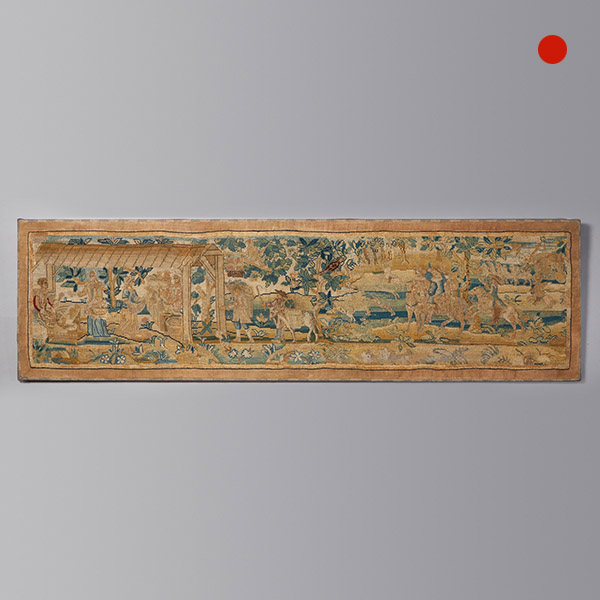
17th Century North Italian Needlework Tapestry, circa 1680
17th Century North Italian Needlework Tapestry, circa 1680 SoldFollow Us17th Century North Italian Needlework Tapestry, circa 1680 Late 17th-century North Italian needlework panel, circa 1680, of a party of courtiers arriving at an Inn....

Fine American Two Day Marine Chronometer, Signed T. S & J. D Negus New York
Fine American Two Day Marine Chronometer, Signed T. S & J. D Negus New York SoldFollow UsFine American Two Day Marine Chronometer, Signed T. S & J. D Negus New York A Classic beautifully produced mid-19th century American chronometer...

Fine 18th Century George III Chippendale Mahogany pie-crust Tripod Table
Fine 18th Century George III Chippendale Mahogany pie-crust Tripod Table SoldFollow UsFine 18th Century George III Chippendale Mahogany pie-crust Tripod Table A Fine 18th Century George III Mahogany Pie-Crust Tripod Table with birdcage in the...

Early 18th Century Queen Anne/George I Japanned Chinoiserie Corner Cupboard
Early 18th Century Queen Anne/George I Japanned Chinoiserie Corner Cupboard SoldFollow UsEarly 18th Century Queen Anne/George I Japanned Chinoiserie Corner Cupboard A very atmospheric and original Queen Anne to George I black japanned...

17th Century Charles II Carved Oak Writing Box or Desk Box circa 1660 England
17th Century Charles II Carved Oak Writing Box or Desk Box SoldFollow Us17th Century Charles II Carved Oak Writing Box or Desk Box A rare 17th-century Charles II carved oak writing or desk box, circa 1660. England. The box opens on the...

Pair of George IV Regency Specimen Wood Parquetry Boxes of Sarcophagus Shape
Pair of George IV Regency Specimen Wood Parquetry Boxes of Sarcophagus Shape SoldFollow UsPair of George IV Regency Specimen Wood Parquetry Boxes of Sarcophagus Shape An extremely rare and fine pair of George IV Regency exotic timber boxes of...

17th Century North Italian Needlework Tapestry, circa 1680
17th Century North Italian Needlework Tapestry, circa 1680 SoldFollow Us17th Century North Italian Needlework Tapestry, circa 1680 Late 17th-century North Italian needlework panel, circa 1680, of a party of courtiers arriving at an Inn....
YOU MAY ALSO LIKE
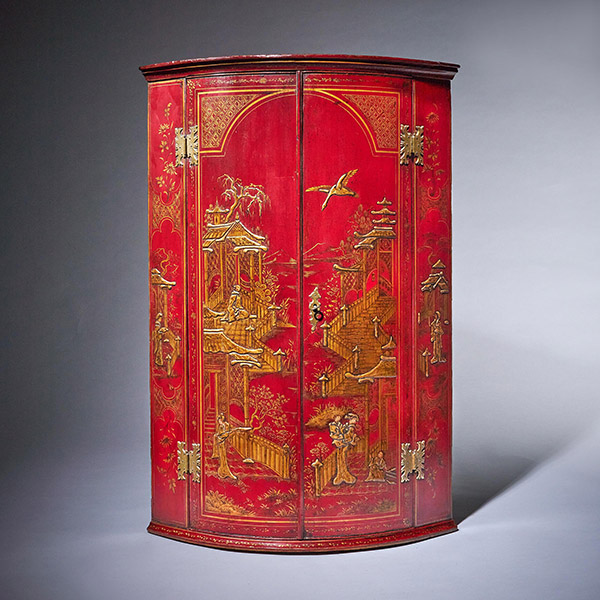
18th Century George II Scarlet-Red Japanned Corner Cupboard Att. Giles Grendey
18th Century George II Scarlet/Red Japanned Corner Cupboard, Att. Giles Grendey Follow Us18th Century George II Scarlet/Red Japanned Corner Cupboard, Att. Giles Grendey A fine and rare early 18th century George II scarlet japanned chinoiserie...
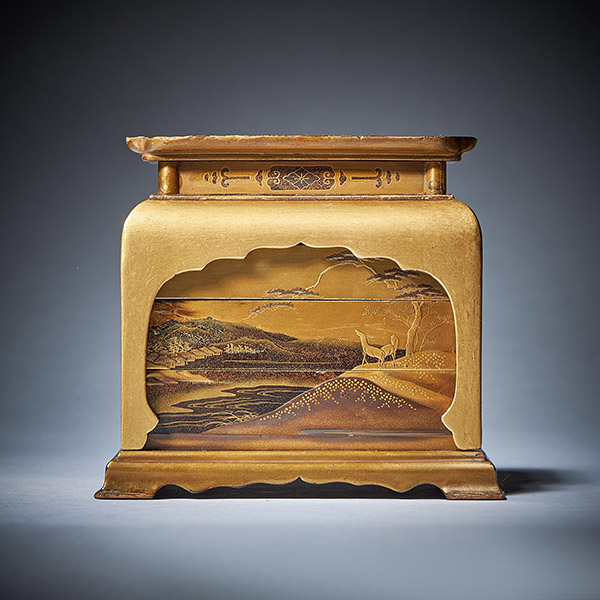
Signed Mid 19th C. Edo/Meiji Period Diminutive Lacquer Stacking Cabinet, Japan
Signed Mid 19th C. Edo/Meiji Period Diminutive Lacquer Stacking Cabinet, Japan £5,800Follow UsSigned Mid 19th C. Edo/Meiji Period Diminutive Lacquer Stacking Cabinet, Japan The highly decorated tray in the form of a table frames a series of...
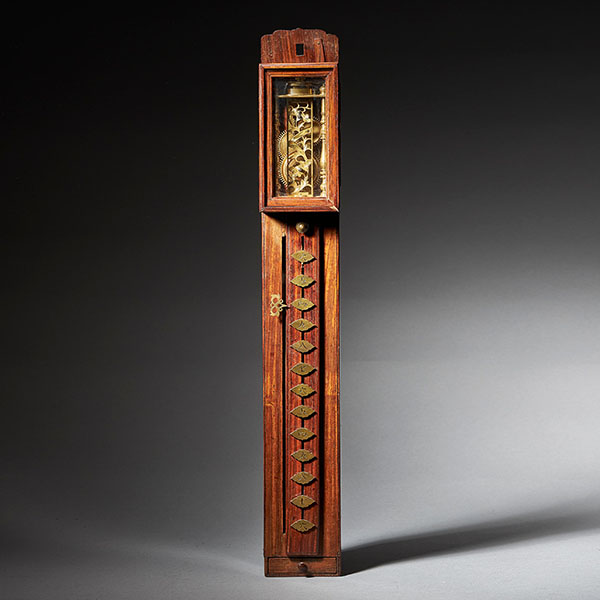
Late Edo Period 19th Century Japanese Pillar Clock, Shaku-Dokei, C. 1820
Late Edo Period 19th Century Japanese Pillar Clock, Shaku-Dokei, C. 1820 £6,500Follow UsLate Edo Period 19th Century Japanese Pillar Clock, Shaku-Dokei, C. 1820 ELEGANT JAPANESE PILLAR CLOCK, 'SHAKU-DOKEI', c. 1820 The very fine 30-hour,...
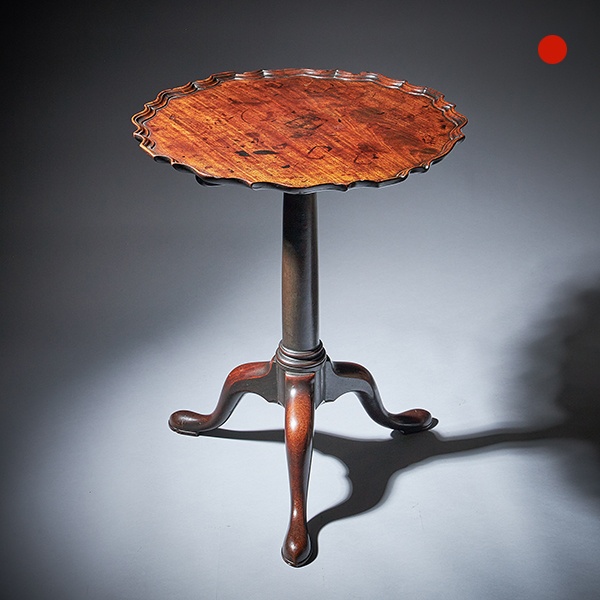
George II Gun Barrel Mahogany Tripod Table, circa 1740-1750
George II Gun Barrel Mahogany Tripod Table, circa 1740-1750 SoldFollow UsGeorge II Gun Barrel Mahogany Tripod Table, circa 1740-1750 George II Gun Barrel Mahogany Tripod table. The well-figured top has a pie crust edge, resting on a gun...
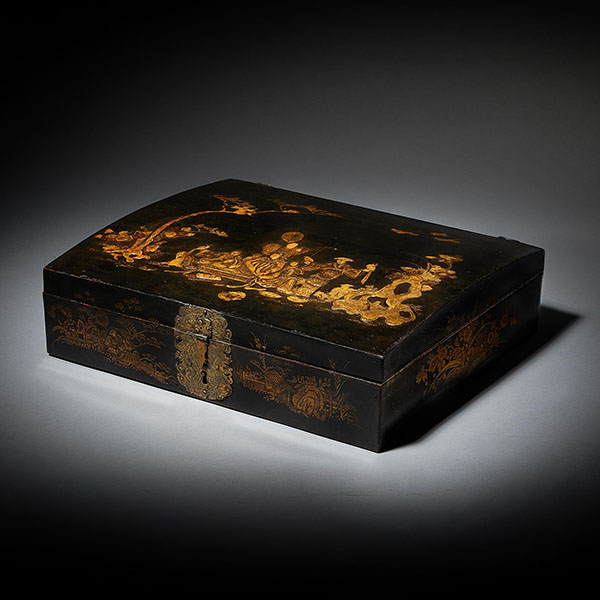
18th Century George I Domed Topped Japanned Chinoiserie Falconry Box
18th Century George I Domed Topped Japanned Chinoiserie Falconry Box, circa 1710 £3,900Follow Us18th Century George I Domed Topped Japanned Chinoiserie Falconry Box, circa 1710 A rare and important Queen Anne - George I japanned chinoiserie...
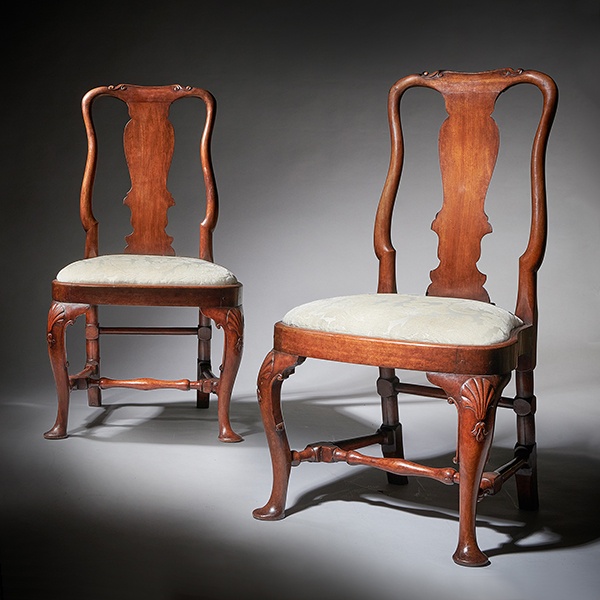
Pair of George I 18th Century Carved Mahogany Chairs, Circa 1720
Pair of George I 18th Century Carved Mahogany Chairs, Circa 1720 £4,400Follow UsPair of George I 18th Century Carved Mahogany Chairs, Circa 1720 A superb pair of early 18th-century carved George I mahogany chairs, circa 1720. Each chair is of...

18th Century George II Scarlet-Red Japanned Corner Cupboard Att. Giles Grendey
18th Century George II Scarlet/Red Japanned Corner Cupboard, Att. Giles Grendey Follow Us18th Century George II Scarlet/Red Japanned Corner Cupboard, Att. Giles Grendey A fine and rare early 18th century George II scarlet japanned chinoiserie...

Signed Mid 19th C. Edo/Meiji Period Diminutive Lacquer Stacking Cabinet, Japan
Signed Mid 19th C. Edo/Meiji Period Diminutive Lacquer Stacking Cabinet, Japan £5,800Follow UsSigned Mid 19th C. Edo/Meiji Period Diminutive Lacquer Stacking Cabinet, Japan The highly decorated tray in the form of a table frames a series of...

Late Edo Period 19th Century Japanese Pillar Clock, Shaku-Dokei, C. 1820
Late Edo Period 19th Century Japanese Pillar Clock, Shaku-Dokei, C. 1820 £6,500Follow UsLate Edo Period 19th Century Japanese Pillar Clock, Shaku-Dokei, C. 1820 ELEGANT JAPANESE PILLAR CLOCK, 'SHAKU-DOKEI', c. 1820 The very fine 30-hour,...

George II Gun Barrel Mahogany Tripod Table, circa 1740-1750
George II Gun Barrel Mahogany Tripod Table, circa 1740-1750 SoldFollow UsGeorge II Gun Barrel Mahogany Tripod Table, circa 1740-1750 George II Gun Barrel Mahogany Tripod table. The well-figured top has a pie crust edge, resting on a gun...

18th Century George I Domed Topped Japanned Chinoiserie Falconry Box
18th Century George I Domed Topped Japanned Chinoiserie Falconry Box, circa 1710 £3,900Follow Us18th Century George I Domed Topped Japanned Chinoiserie Falconry Box, circa 1710 A rare and important Queen Anne - George I japanned chinoiserie...

Pair of George I 18th Century Carved Mahogany Chairs, Circa 1720
Pair of George I 18th Century Carved Mahogany Chairs, Circa 1720 £4,400Follow UsPair of George I 18th Century Carved Mahogany Chairs, Circa 1720 A superb pair of early 18th-century carved George I mahogany chairs, circa 1720. Each chair is of...









